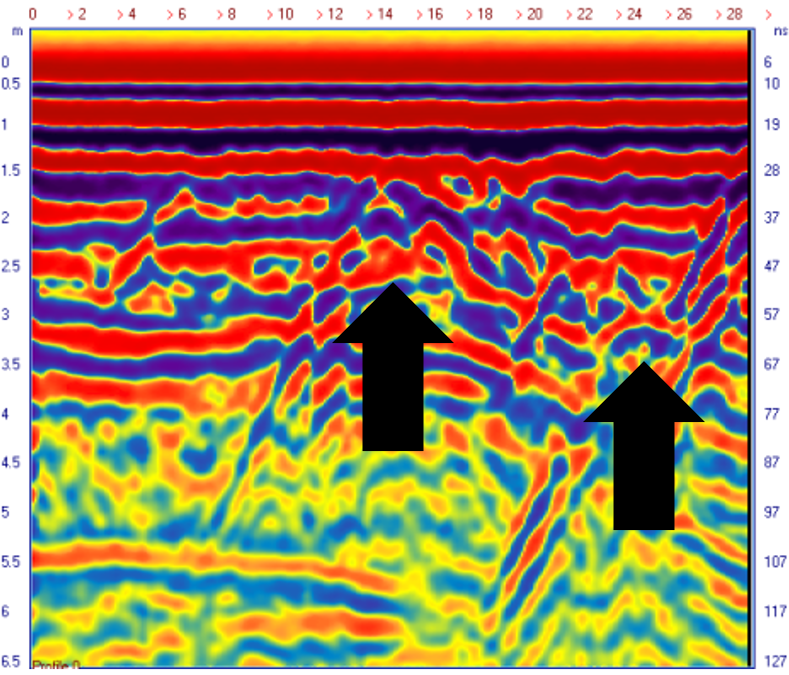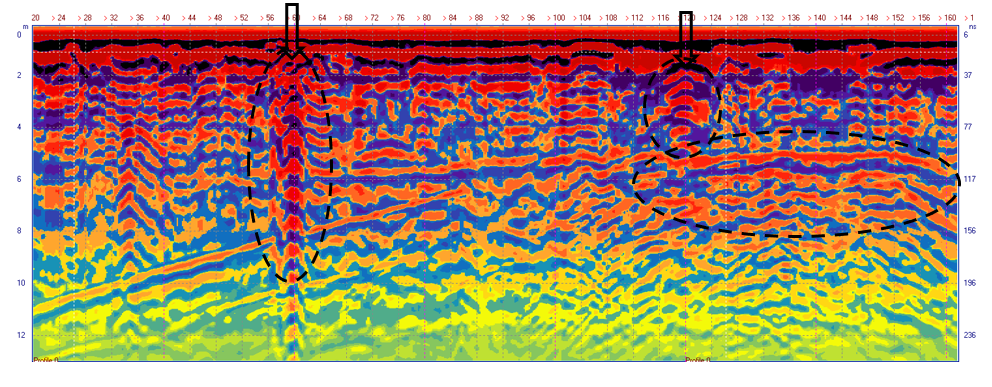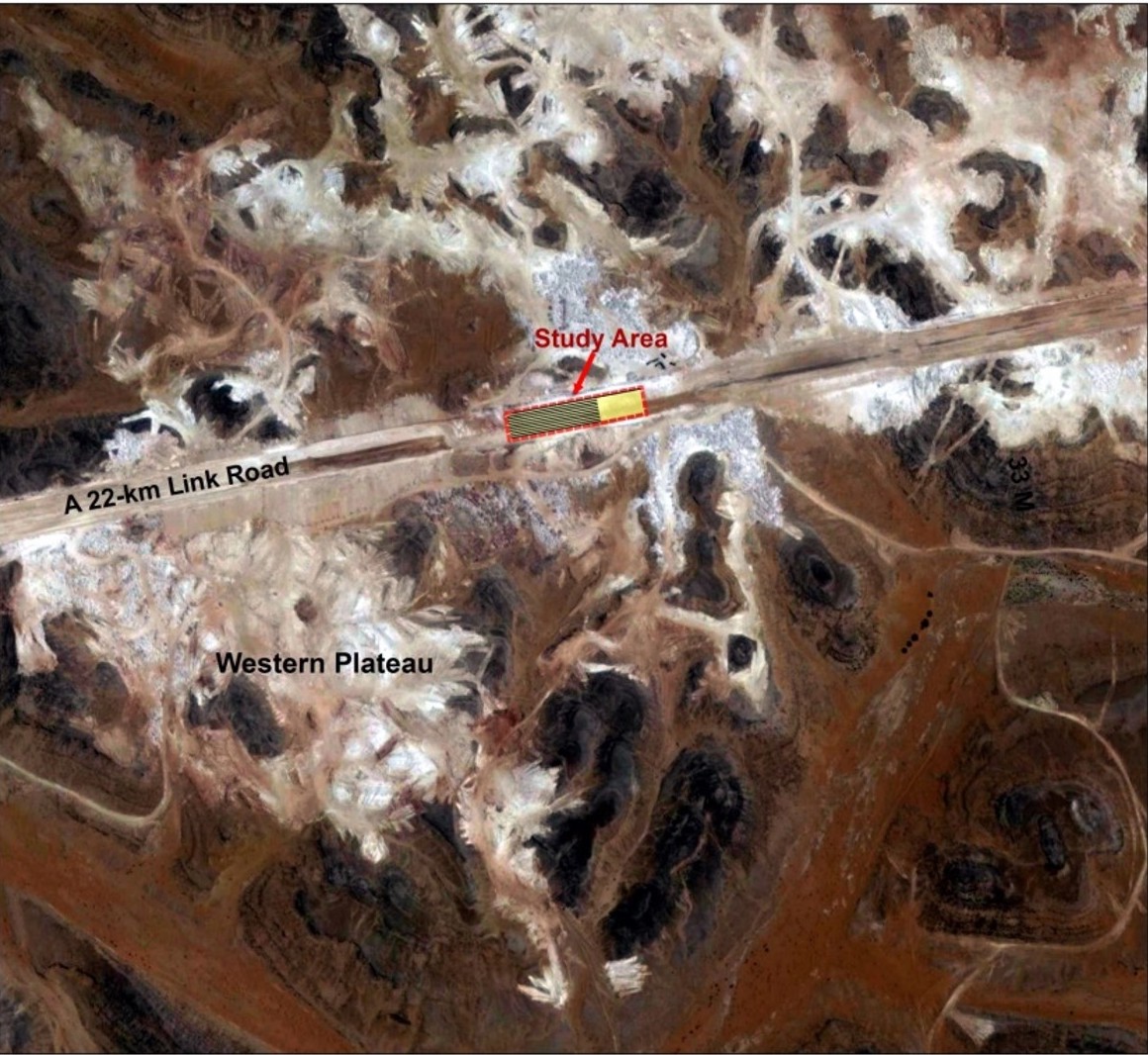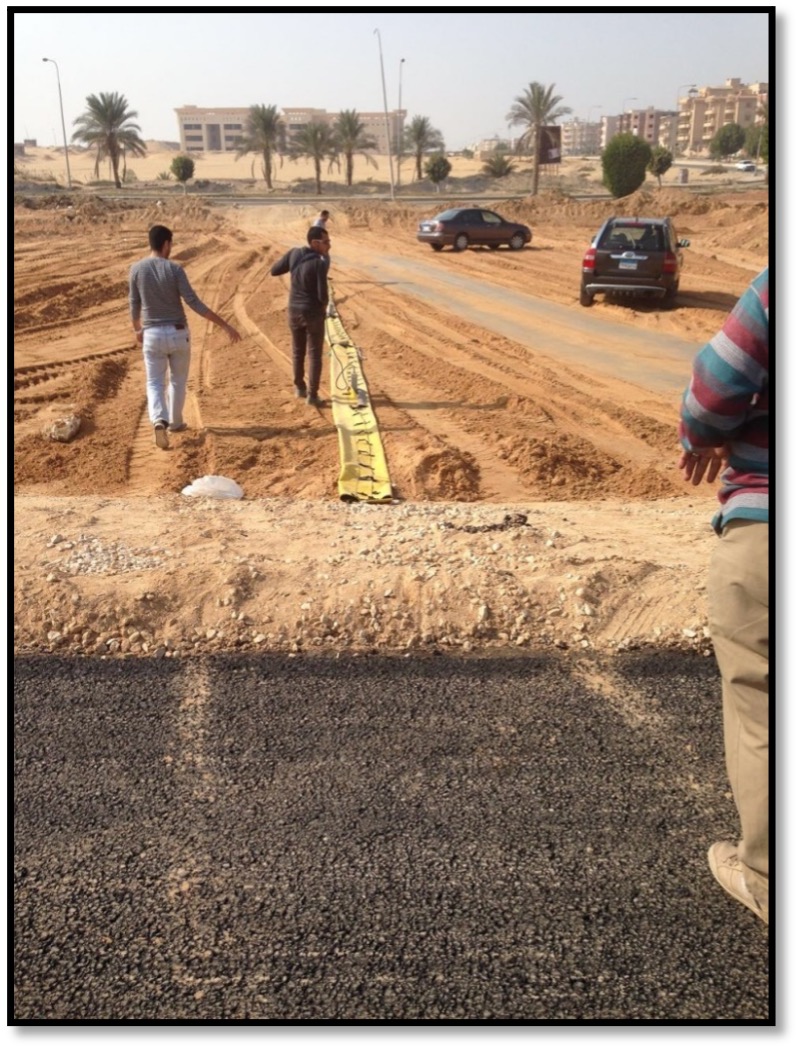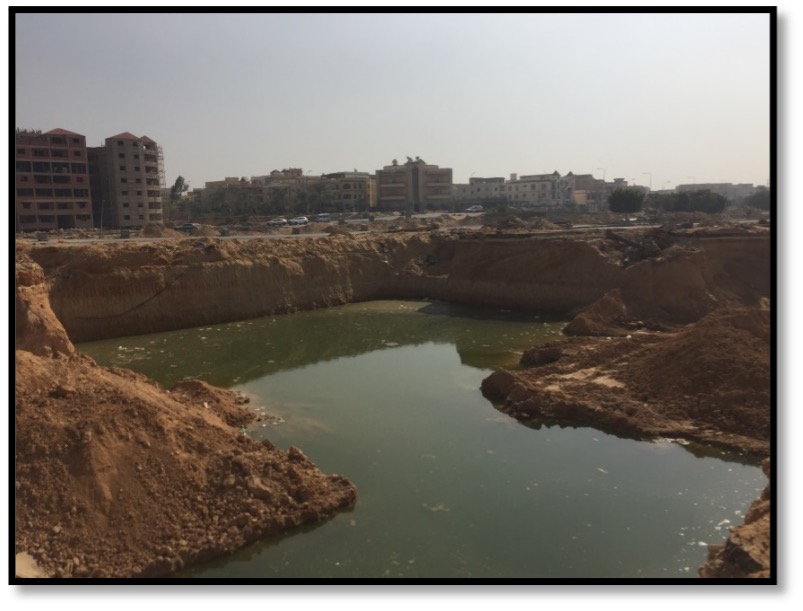GPR Archeology
Alamein New City
Project Objective:
Investigating project land to ensure it is clearness from any archeological sites.
Radargram Interpretation:
Area of interest is clearly spotted which shows positively the existence of underground structure.






